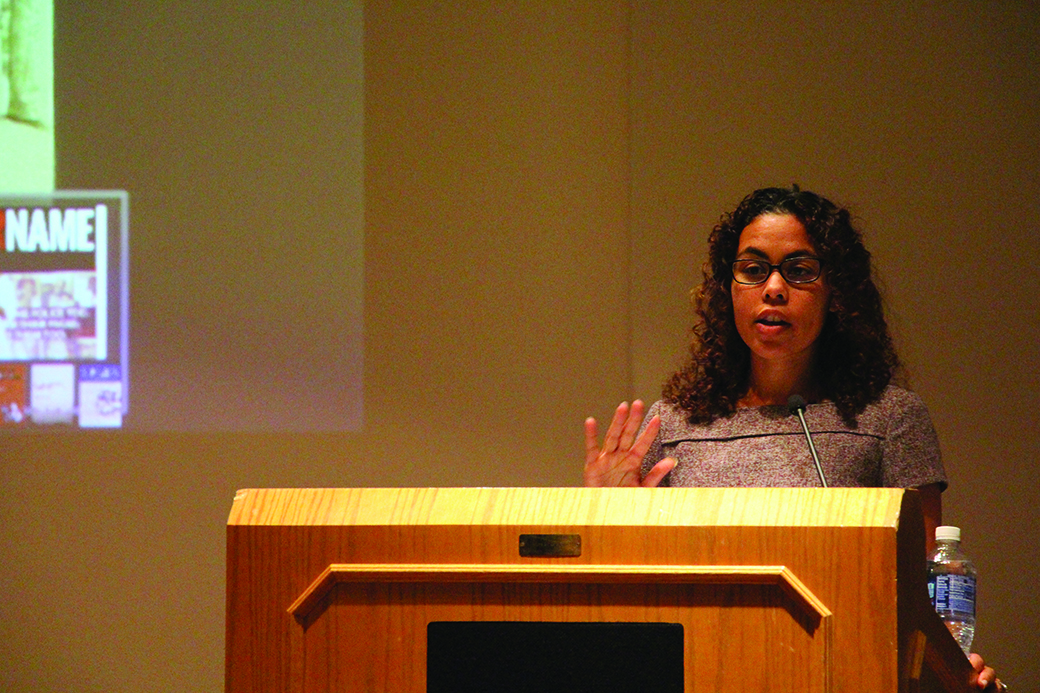
Visiting professor discusses black female perspective of Jim Crow laws
When some people envision racial tensions in the South during the reign of Jim Crow laws, the suffering of male African Americans at the hands of white authorities may come to mind.
This view, however, is distorted, according to LaKisha Simmons, a professor of Global Gender Studies and American Studies at the University of Buffalo, who visited USD on Nov. 3 to deliver a lecture on the ways in which Jim Crow era discrimination affected black females.
Her lecture, entitled “Crescent City Girls: The Jim Crow Justice System & Black Girlhood in New Orleans,” shares its name and content with a book written by Simmons.
Around 60 people attended the lecture, which lasted about an hour.
Simmons provided detailed histories of three incidents that took place in the 1930s and 1940s in New Orleans, which illustrated the struggles of black females in the South during the era.
By discussing these conflicts, Simmons hopes to expose the “emotional and physical violence of legalized segregation,” and the “invisibility of black girls’ experiences.”
The first story she told was of 14-year-old Hattie McCray, who was killed in 1930 by an off-duty white police officer because she refused his sexual advances.
The incident, Simmons said, sparked outrage in both black and white communities, and Charles Guerand was sentenced to death in April of that year.
Guerand’s sentence, however, was later commuted, and instead of prison, he was held in an asylum and released in 1938.
This incident illustrates a gross miscarriage of justice, Simmons said.
Simmons’ next story happened nearly twenty years later, when 64 people were arrested for attending an interracial college party.
Both authorities and community members were outraged by the incident, which took place in 1949.
Authorities were called to the house by a neighbor concerned by what he felt was an outrageous noise level coming from the house, which he claimed was because of the presence of African Americans at the party, Simmons said.
Some New Orleans newspapers at the time reported the party may have been organized by Communists or Northerners, Simmons said.
This sentiment was reflected in the New Orleans community at large, which Simmons said could scarcely believe that blacks and whites had dared to attend such a party.
During the same time period, a much more sinister group of occurrences rocked New Orleans, which Simmons used to illustrate the callousness of the justice system at the time.
In June of 1946, a black 16-year-old named Dorothy Jackson ran away from her abusive father, Arnold Jackson. The father then killed his daughter’s friend, Ione Washington, and injured Washington’s sister, Lillian.
Despite considerable evidence against him, however, Jackson was acquitted in 1947, Simmons said.
Simmons added that in June 1951, Jackson killed his common-law wife and burned her house, killing himself along with several of his relatives. It was later discovered that Jackson had also killed a girlfriend prior to the earlier murder of Washington.
In Simmons’s view, the reason for Jackson’s 1947 acquittal was a justice system that cared little about the black lives that he endangered.
Later in her discussion, Simmons described the ongoing struggles of the female black community, which she said is highlighted by present-day social movements such as “Say Her Name” and “Black Lives Matter.”

